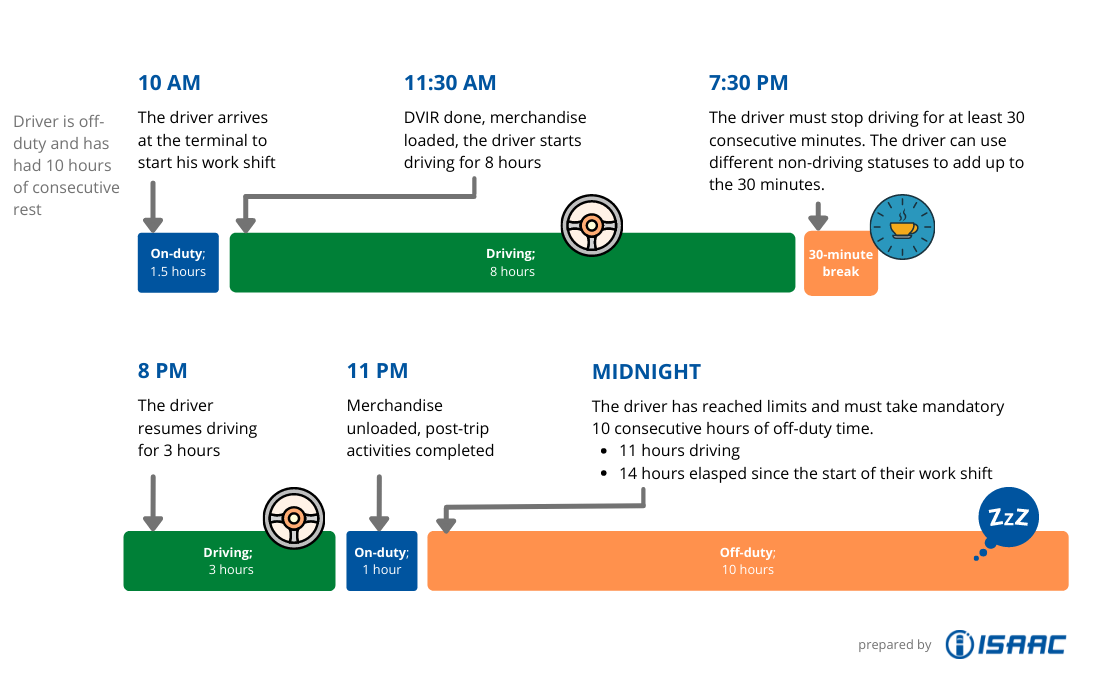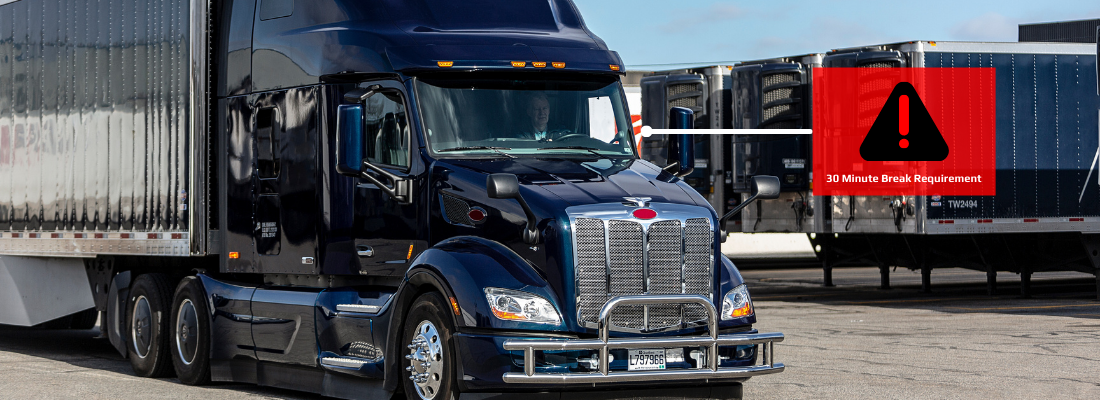Hours-of-service regulations defined
Hours-of-Service (HOS) regulations are issued by the Federal Motor Carrier Safety Administration (FMCSA) in the United States. They specify the maximum amount of time drivers are permitted to be on duty, including driving time and specifies the number and length of rest periods. The HOS’s primary purpose is to help ensure overall road safety, prevent accidents caused by driver fatigue, and improve drivers’ quality of life.
Who must comply with HOS rules?
Most carriers and drivers operating commercial motor vehicles (CMV) must comply with HOS regulations found in article 49 CFR 395. A CMV is a vehicle that is used for business, is involved in interstate commerce and fits any of these descriptions:
- Weighs 10,001 lbs or more
- Has a gross vehicle weight rating or gross combination weight rating of 10,001 lbs or more
- Is designed or used to transport 16 or more passengers (including the driver) not for compensation
- Is designed or used to transport 9 or more passengers (including the driver) for compensation
- Is transporting hazardous materials in a quantity requiring placards
HOS rules overview for property-carrying drivers
11-Hour Driving Limit
A driver may drive a maximum of 11 hours after 10 consecutive hours off duty.
14-Hour Limit
A driver may not drive beyond the 14th consecutive hour after coming on duty. The driver can’t resume driving unless they have taken 10 consecutive hours off-duty. Off-duty time does not extend the 14-hour period.
30-Minute Driving Break
Drivers must stop driving if more than 8 hours of driving have passed without at least a consecutive 30-minute interruption of driving. The break (or interruption of driving time) can be satisfied by any non-driving activity or a combination of non-driving activities of 30 consecutive minutes.
10 minutes off-duty + 20 minutes on-duty, not driving = 30 consecutive minutes break
70-Hour Limit (cycle)
A driver may not drive after cumulating 70 hours on duty in 8 consecutive days. A driver may restart an 8 consecutive day period at any time after taking 34 or more consecutive hours off duty.
Looking for the Canadian HOS rules overview? Check out this blog: Understanding the HOS Rules and Exemptions in Canada
A day in the life of a truck driver respecting the U.S. HOS regulations

Commonly used provisions
Here’s a quick overview of commonly used provisions of the hours-of-service regulations to provide greater flexibility for drivers while maintaining safety on the roads.

